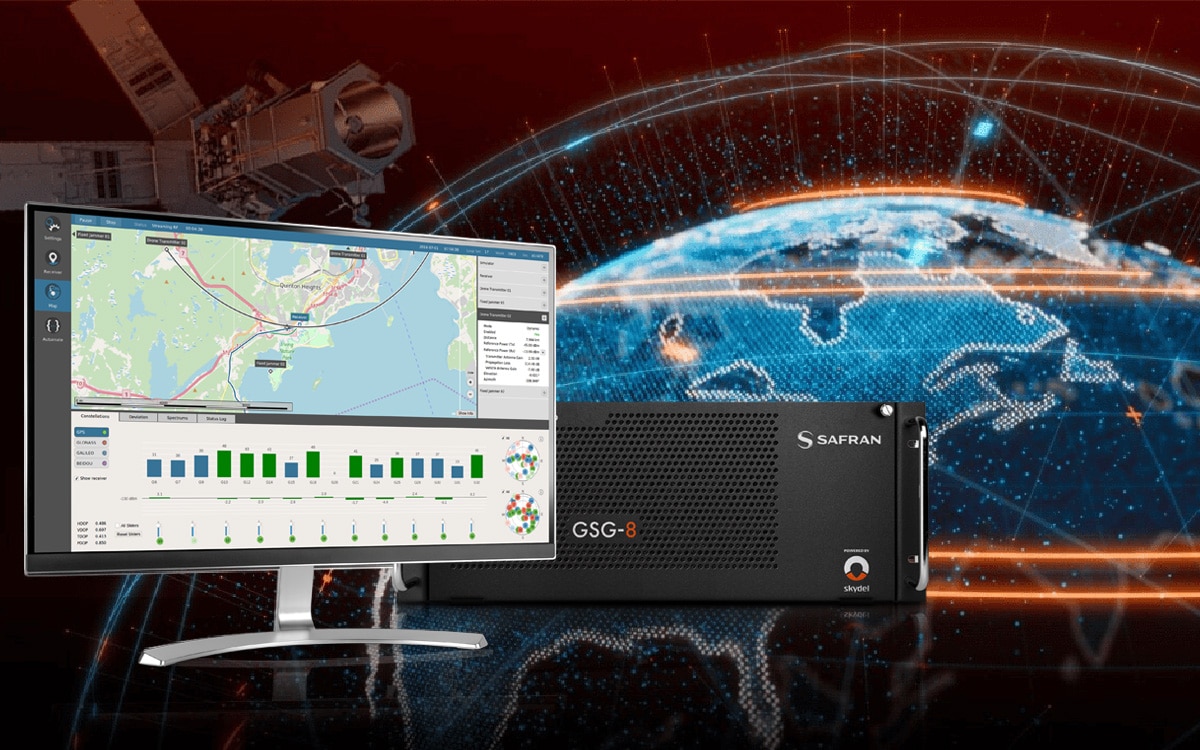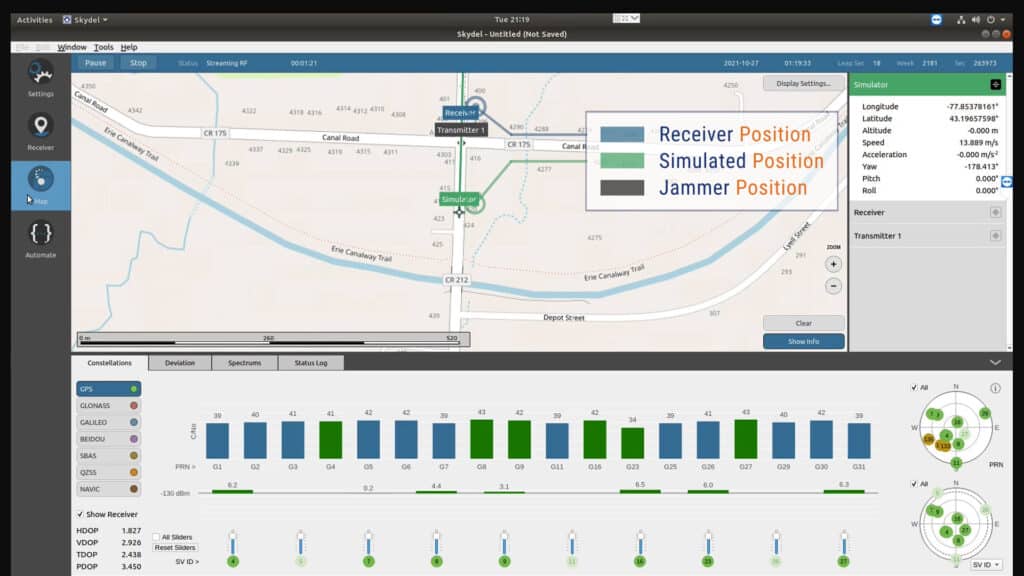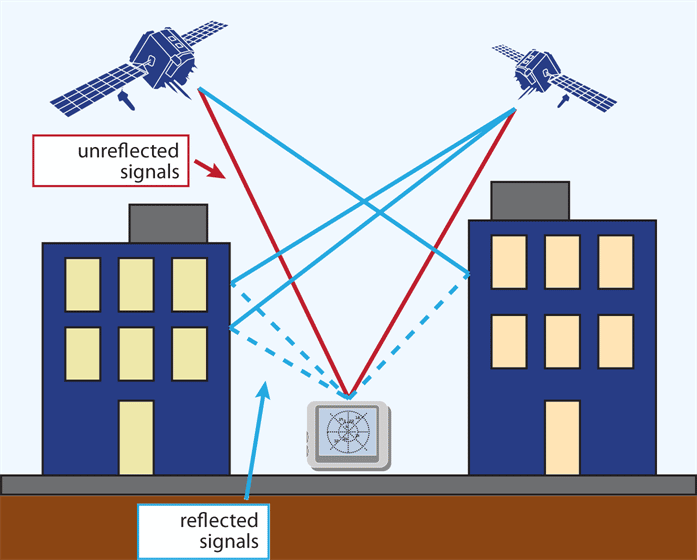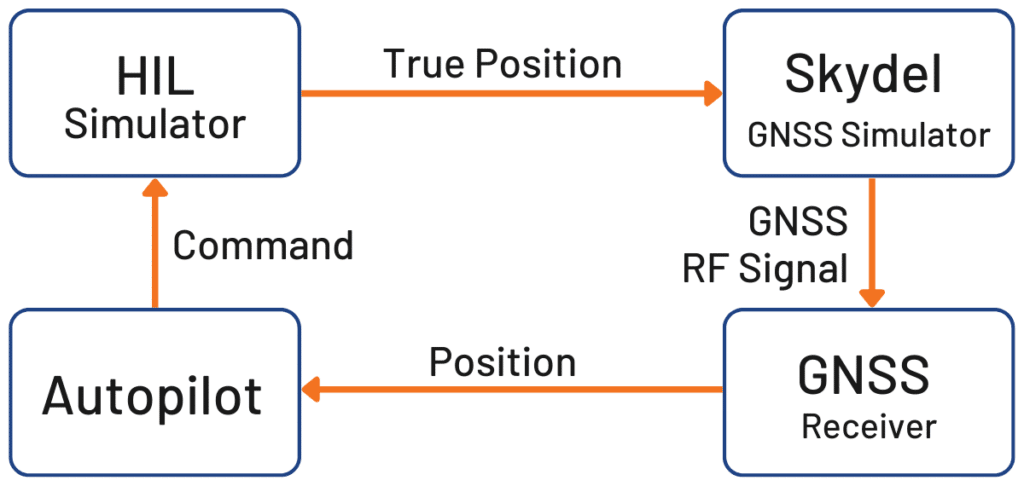
GNSS Simulation: How Do I Choose A GPS/GNSS Simulator?
In order to properly test a GNSS receiver, or any system or device that relies on global navigation satellite signals, engineers need to simulate the same RF signals that are broadcast by real satellites. The best way to accomplish this is to use a GPS/GNSS simulator.
In a hypothetical scenario, let’s say you’re developing a new product and one of the elements integrated inside the product is a GPS/GNSS receiver. You’ve outlined a set of tests to validate that your receiver device performs well under different conditions. The next step is acquiring a simulator. While there are plenty of well-designed solutions available, choosing a GNSS simulator that’s the right fit for your application is important. This article provides considerations for selecting a GNSS simulator that will fulfill your specific testing requirements.
What To Consider When Selecting A GPS/GNSS Simulator
Will you need to see the data output from the receiver at the same time you are testing?
If the answer is yes, make sure you select a simulator that enables you to connect directly to your receiver device via a serial port, so you can better simulate how that device will act in the real world, allowing you to see the deviation between what you’re simulating, and what the receiver sees in real time.
Can the simulator combine multiple constellations during a simulation?
If you’re developing a consumer product, for example, that needs to continue functioning even if it loses a lock with the GPS constellation, you’ll need to be able to simulate the time to lock on additional constellations. This type of a simulation will ensure that the GNSS receiver inside your product can take advantage of the increased availability of satellites. The simulator should let you control the exact combination of constellations and frequency bands. More importantly, your GNSS simulator should give you the ability to change the power level of individual satellite signals, during the test, in order for you to see how your device performs if it were to drive through a tunnel and suddenly lose reception of a particular satellite. Below is a table showcasing the satellite signals and constellations supported by Skydel that you may need to incorporate into your simulations.
| Signal | Part number | Signal | Part number |
|---|---|---|---|
| GPS | NAVIC | ||
| L1CA | SKY-GPSCA | L5 | SKY-NAVICL5 |
| L1C | SKY-GPSL1C | Beidou | |
| L2C | SKY-GPSL2C | Beidou-2 | |
| L5 | SKY-GPSL5 | B1I | SKY-BEIB1 |
| L1P-L2P | SKY-GPSL1L2 | B2I | SKY-BEIB2 |
| SBAS | B3I | SKY-BEIB3** | |
| SBAS L1 | SKY-SBAS | Beidou-3 | |
| SBAS L5 | SKY-SBAS | B1C | SKY-BEIB1-III |
| GLONASS | B2A | SKY-BEIB2-III | |
| G1 | SKY-GLOG1 | QZSS | |
| G2 | SKY-GLOG2 | L1CA | SKY-QZSSCA |
| G1C | SKY-GLOG1C*** | L1C | SKY-QZSSL1C |
| G2C | SKY-GLOG2C*** | L1C/B | SKY-QZSSCB |
| G3C | SKY-GLOG3C*** | L2C | SKY-QZSSL2C |
| Galileo | L5 | SKY-QZSSL5 | |
| E1 (E1BC) | SKY-GALE1 | L1S/L5S | SKY-QZSS-S |
| E5a, E5b, ATLBOC | SKY-GALE5 | L6DE | SKY-QZSSL6*** |
| HAS Noise (E6BC) | SKY-GALHAS-NOISE | ||
| PRS Noise (E1A, E6A) | SKY-GALPRS-NOISE** | ||
| JUNE 2022 STATUS | * In development | ** On roadmap | *** Not scheduled |
Will your product be vulnerable to jamming and spoofing?
Intentional RF interference caused by jamming or spoofing may be worth simulating before launching your new product. Given that jammers are becoming highly prevalent due to low off-the-shelf costs of RF equipment, signal interference poses a real threat to the proper functioning of GPS devices. A GNSS simulator must give you the capability to mimic these types of signals in order to thoroughly evaluate how your GNSS receiver would perform – or at least observe the points at which it fails under those harsh conditions.

If you are concerned about jamming or spoofing, the simulator you choose should be able to handle the simulations of these interferences, taking into account key details such as the propagation, the modulation, the type of RF interference, their power levels, and more.
Will your product be used inside a building? Urban Environment? Outdoors?
If your end-use device will be used inside a building or in an urban environment, you’ll need a simulator to test its performance handling multipath signals. Multipath occurs when the signals from the satellite bounce off objects and/or the ground and cause multiple echoes of the main signal to arrive at the GNSS receiver.

Your simulator will need to have full control of over the number of multi-path signals to simulate during a test. And most importantly, the GNSS simulator you select must be able to stress-test the receiver to determine if it can discern which signals to use and which to reject. Multipath can occur in any environment, but the denser the buildings are, the more multipath will occur. Multipath can also occur when the signals reflect off of the vehicle itself. This is often a concern with space vehicles. Whatever the environment is, nearly every application should be concerned with testing of multipath.
Is cost a constraint?
Some simulators are designed to only provide a finite number of channels and satellite signals, and adding channels incurs an additional cost. Other simulators leverage software to combine all-in-view satellite signals at once so that the user does not have to pay for additional channels. Nor do they have to wait for a new unit to ship that has the added FPGA slots. Further cost savings can be achieved by using your own hardware and combining it with a simulation software. A solution that is not specifically linked to a hardware purchase provides additional cost flexibility.
How about the time investment required to set up and configure tests?
If setup and configuration time is a concern, consider a simulator that allows you to easily add or remove signals with a click of a mouse. Simulators that rely on hardware-only architecture require a more demanding time investment to set up each test, change the satellite signals being tested, or change any other parameter of the simulation.
Are the simulator products that you’re considering able to simulate different vehicle and equipment types?
Considering the ubiquity of GNSS receivers used in our everyday lives, a GNSS receiver could be integrated into devices ranging from a smartphone, all the way to a commercial airline navigation system. Therefore, before releasing a new product and to ensure it satisfies stringent safety requirements, a GPS/GNSS simulator should allow you to place the receiver you’re testing on different movement paths, whether that’s a stationary application like a 5G radio tower, or an automobile travelling from point A to point B, a flying drone, or even a space vehicle launching into space.
Will your simulator need to perform advanced Hardware-in-the-loop (HIL) testing?
HIL testing is a critical step in the testing process during product development. It usually is the last rigorous test to perform before bringing the product or system to the field to test under live-sky environments. HIL is more sophisticated than simply testing a GNSS receiver device: it incorporates other elements of the system that the GNSS receiver is integrated with, including (but not limited to) other simulators, equipment, sensors etc.

Will you need to automate any of the simulations you want to run?
If you have any kind of customization or test replication requirements, and you don’t want to manually tweak the parameters each test, consider a simulator that gives you the power of leveraging an API. GNSS simulators that provide you with an API will allow you to configure and control all aspects of the simulator. Skydel, for example, gives you full control over all of the commands seen in the GUI.
Will the GNSS receiver that you need to test be responsible for providing position data or timing data to other parts of the system?
You’ll need to ensure that the GPS simulator you choose can robustly test the performance of both types of information outputs – timing and receiver position. To ensure timing accuracy, Safran GNSS simulators – especially the GSG-7 – can test the timing accuracy of a GPS receiver by comparing the 1PPS from the GNSS Simulator the 1PPS signal generated by the receiver.
Will your application be used on the ground, in the sky, or in space?
One of the main benefits of owning a GNSS simulator is the ability to run tests in multiple locations around the world right on your computer, without having to go there to perform a live-sky test. If the simulator you choose does not allow for easy modifications of locations or vehicles, then you’ll be limited in the types of simulations you can run.
What level of training will you or your team need? Will you require material to train your team on how to use the GNSS simulation software that controls the simulator?
Make sure the GNSS Simulator that you’re considering offers learning modules that contain the most relevant instructions on how to run certain types of simulations. To help shorten the leaning curve, we created a free GNSS simulation training program that teaches you how to setup and run simulations using the Skydel engine.
Do some of your testing requirements include the variations caused by atmospherics?
Given the large distance between satellites and the surface of the Earth, there are both naturally-occurring as well as man-made conditions which can affect the GPS/GNSS signal quality as it arrives to your GPS receiver. Consequently, the simulator you choose should 100% be able to recreate these adverse conditions for you to confidently know that it will perform despite these very real challenges. The GPS/GNSS simulator should be able to alter characteristics about the atmosphere (i.e. the ionosphere, troposphere).
Will you need to test variations in the satellite signals themselves?
As with any digital data, even the satellite signals themselves may also contain errors including incorrect ephemeris data, corrupted messages and other irregularities. Therefore, it is crucial that a GNSS simulator give you the ability to modify the satellite signal message sequence, signal health, orbits and a number of other signal parameters.
Conclusion
With all of the technical considerations above, you should be on your way to making an informed decision when evaluating potential GNSS Simulators. The main function you’re looking for is a solution that can generate an RF signal and feed it into your GNSS receiver. The higher the quality of that generated RF signal, and the more options you have control over, the better the GNSS simulator will be for your testing, and you’ll have a higher level of certainty regarding your product’s future performance. If you need help selecting a GNSS Simulator for your application, request information from Safran today.


